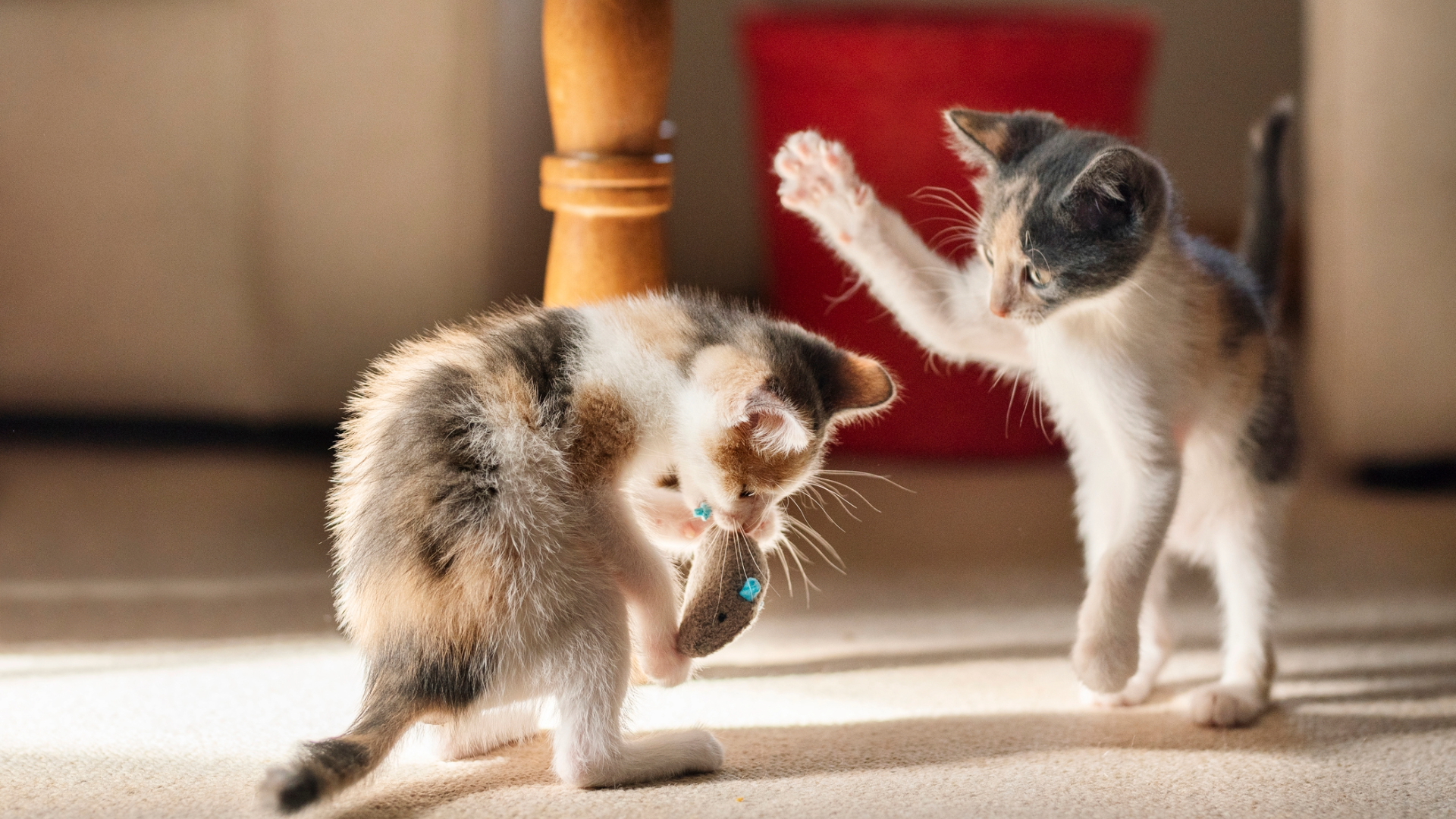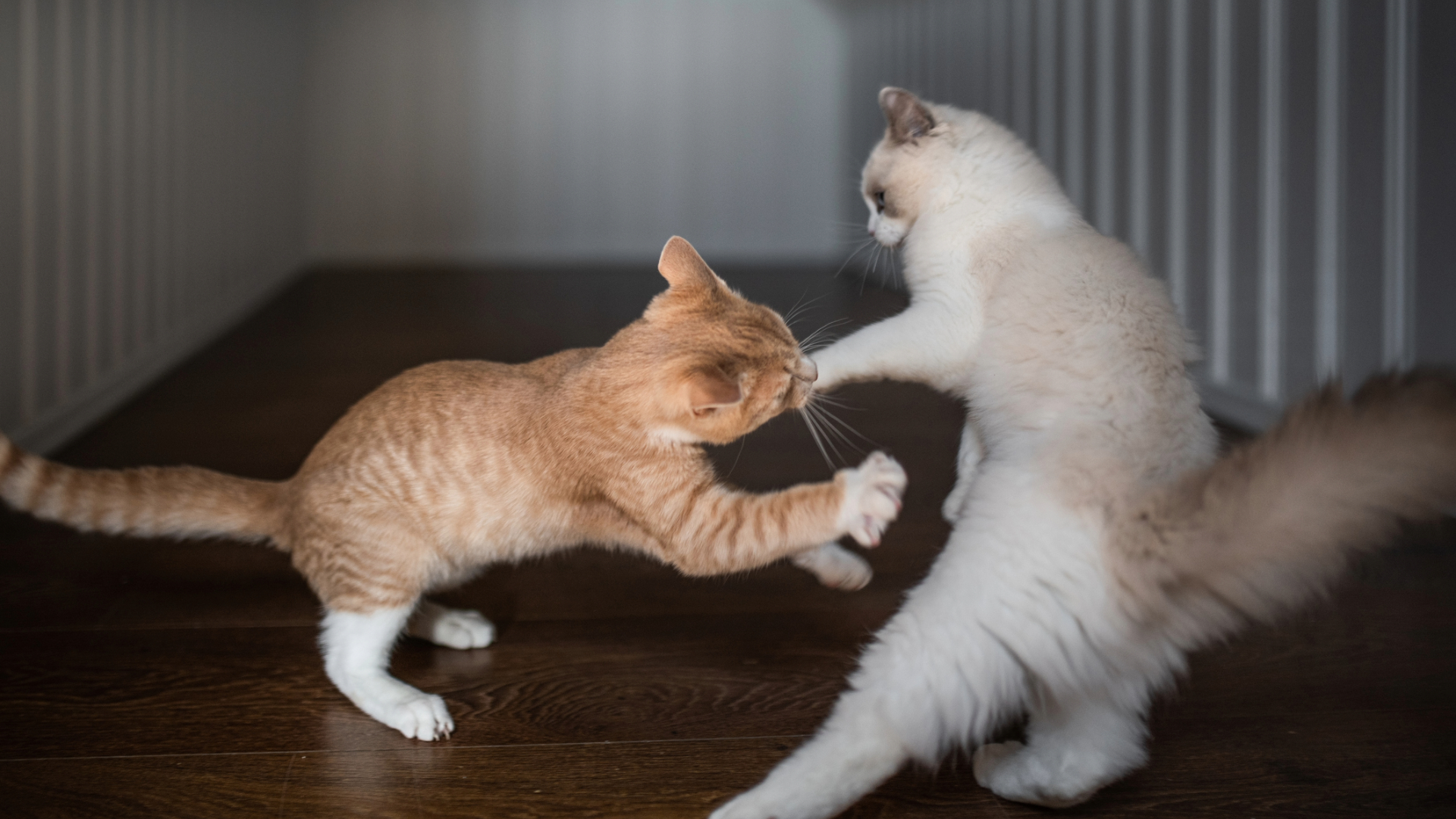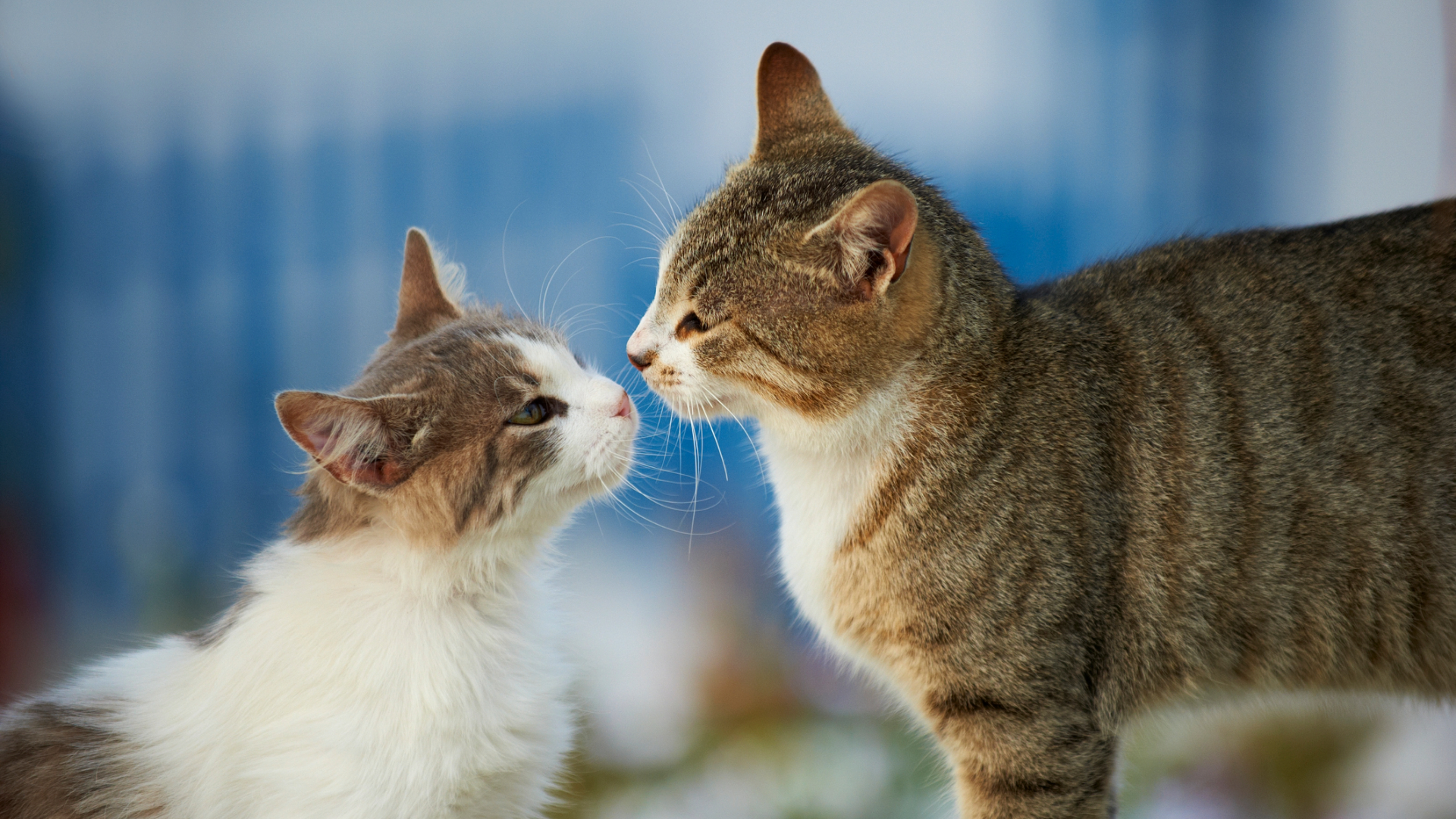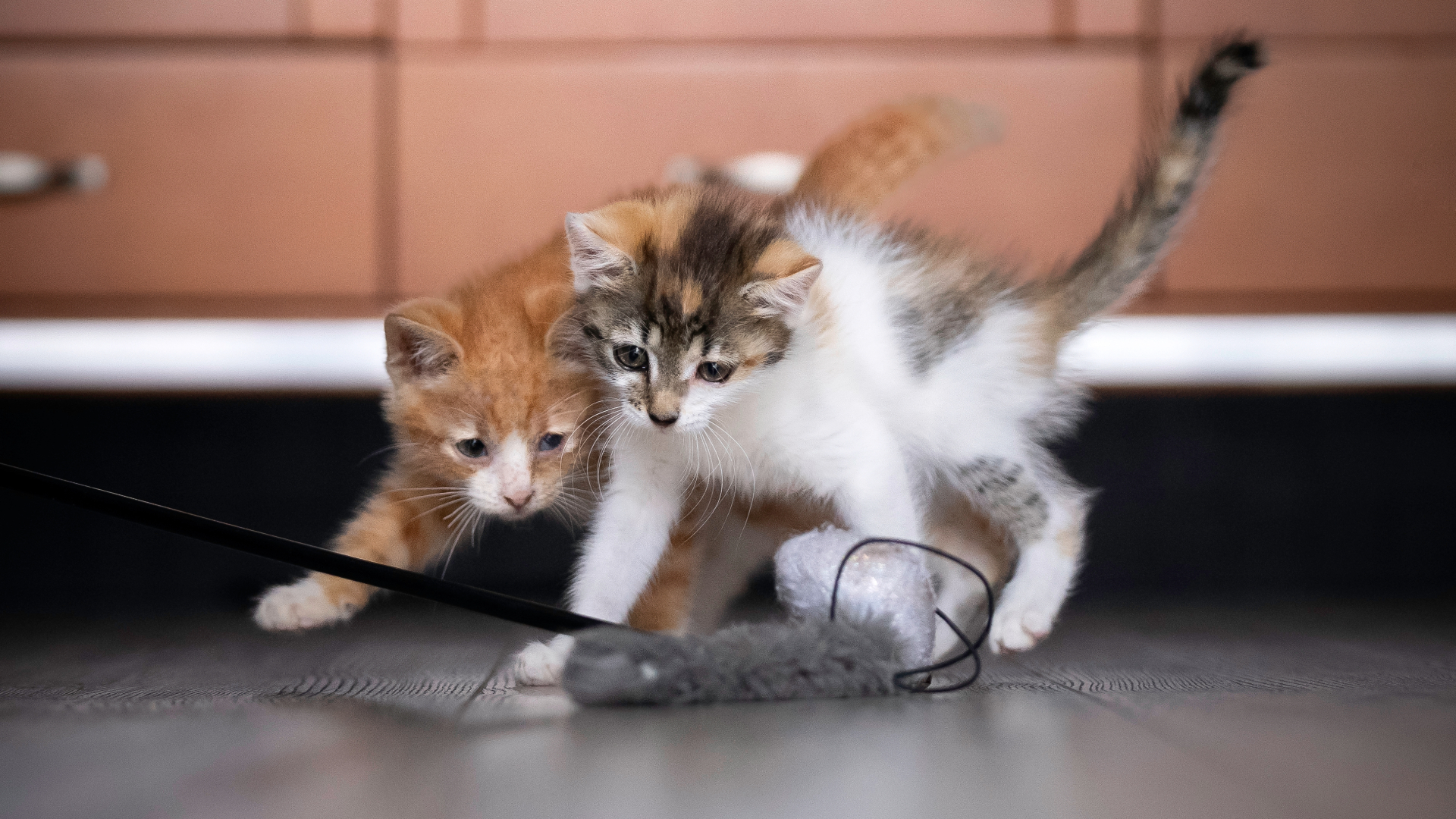
How do cats play with each other? As a vet, I am often asked this question – especially by cat owners who are introducing a new feline into the household or trying to figure out if their cats are having fun or feuding!
I’ve been a practicing vet for more than 13 years. During this time, I’ve seen a wide range of feline behavior – from the lively antics of playful kittens to the more subtle social cues between adult cats.
Understanding how cats communicate and connect through play is key to supporting their wellbeing and nurturing positive relationships between feline companions.
Below, I’ll explain how cats typically play with each other, how to tell the difference between play and fighting, and what to do if your cats don’t seem to enjoy each other’s company. For tips on enriching their environment, don’t forget to take a look at our guide to the best cat toys for indoor cats. Let’s explore the world of feline fun...
How do cats play with each other?
Cats are natural hunters and explorers, and their play styles reflect this. Social play is most common between littermates or cats who have grown up together, but even adult cats can enjoy playful interactions with the right partner. Here are some of the main ways cats play together:
- Chasing and pouncing: This is classic cat play and mimics hunting behavior. One cat takes off while the other gives chase. You’ll often see them taking turns in the ‘hunter’ and ‘prey’ roles.
- Bunny kicking: When two cats tumble together and one grabs the other with their front paws and kicks with their back legs, it’s usually a form of rough-and-tumble play – as long as claws aren’t out and no one’s hissing.
- Batting and pawing: Gentle swipes at each other’s faces or paws are common in playful interactions. The movements are typically slow and relaxed rather than fast or aggressive.

- Hide and pounce games: One cat hides behind furniture or a corner, waiting to spring out at the other. This is great fun for playful cats and helps them burn off energy.
- Stalking behavior: A cat may crouch low and creep up on their companion – another behavior that’s rooted in predatory instincts but perfectly normal in play.
- Tail chasing (theirs or each other’s!): While solo tail chasing can sometimes indicate boredom or stress, cats will occasionally chase each other’s tails in a cheeky, playful way.
- Playful vocalizations: Some cats vocalize during play – little chirrups, trills, or even soft meows. If the tone is relaxed and there’s no growling or yowling, it’s all part of the fun.
How can you tell if two cats are playing or fighting?
Play and fighting can sometimes look surprisingly similar, especially when cats get carried away! There are some key differences to help you tell which is which.
- Body language is relaxed: In play, cats often have loose, bouncy movements. Ears are upright or slightly forward, and tails may be upright or flicking gently. In a fight, postures become tense – they usually have puffed-up fur, arched backs, and rigid tails.
- There’s role-switching: If both cats take turns chasing and pouncing, it’s a good sign they’re playing. One-sided behavior where one cat is always the aggressor might indicate bullying.
- Minimal noise: Play fighting is usually quiet, with occasional soft meows. Growling, hissing, yowling or screeching suggests things have turned serious.
- No injuries: Play rarely results in scratches or bites that break the skin. If one or both cats are getting hurt, it’s time to intervene.
- They come back for more: After a brief break, playful cats will often re-engage with each other. Cats that are fighting will avoid one another or show signs of stress after the interaction.
If you’re ever unsure, it’s best to separate the cats calmly and give them a break. Never punish them – this can increase stress and worsen the issue.

How to tell if a cat is play biting
Cat play biting is normal feline behavior – especially in kittens – but it’s important to distinguish it from true aggression.
- Play bites are gentle and controlled: They don’t break the skin and are usually accompanied by other relaxed body language, such as purring or blinking.
- There’s no hissing or growling: Aggressive bites tend to come with warning signs like flattened ears, tail lashing, or dilated pupils.
- It happens in the context of a game: If your cats are chasing, pouncing, and then doing some light nibbling, it’s probably all good fun.
- The other cat is tolerant: If the ‘victim’ doesn’t seem stressed and stays engaged in the interaction, the bite was likely playful. If they hiss, hide, or swat in return, it might have gone too far.
If biting escalates or becomes too rough, it may be time to step in with a distraction – like a feather wand or one of the best interactive cat toys, to redirect the energy. If it carries on, it is time to calmly separate the cats.

Why won’t my cats play together?
Not all cats are naturally inclined to play with others – and that’s okay. Here are a few reasons your cats might not be playing together:
- Different personalities: Some cats are more independent or shy by nature and may not enjoy rough-and-tumble games.
- Age differences: A sprightly kitten might overwhelm a senior cat who prefers napping to chasing.
- Incomplete introductions: If your cats weren’t introduced gradually and positively, they may not have formed a strong bond, which affects how (and if) they play.
- Underlying stress or tension: Environmental stressors like competition over resources (litter trays, food bowls, sleeping spots) can make cats less inclined to interact.
- Health issues: If one cat isn’t feeling well, they might be more irritable or withdrawn – even if they used to play a lot.
You can encourage cats to play together by using joint play sessions with cat toys or puzzle feeders. Always make sure each cat has access to their own food, water, litter trays, and resting areas that they can retreat to; this will reduce tension between them.

Understanding how cats play with each other is key to supporting their social wellbeing and fostering positive interactions within a multi-cat household.
Play is not only a form of exercise and mental stimulation – it’s also an important way that cats communicate and strengthen their bonds.
By learning to recognize the signs of healthy play versus conflict and providing the right environment for enrichment, you can help your feline companions thrive together.
Found this helpful? Read: Fun games to play with cats and reasons why your cat wants to play all the time
Edited by Megan Milstead and Georgia Guerin.







